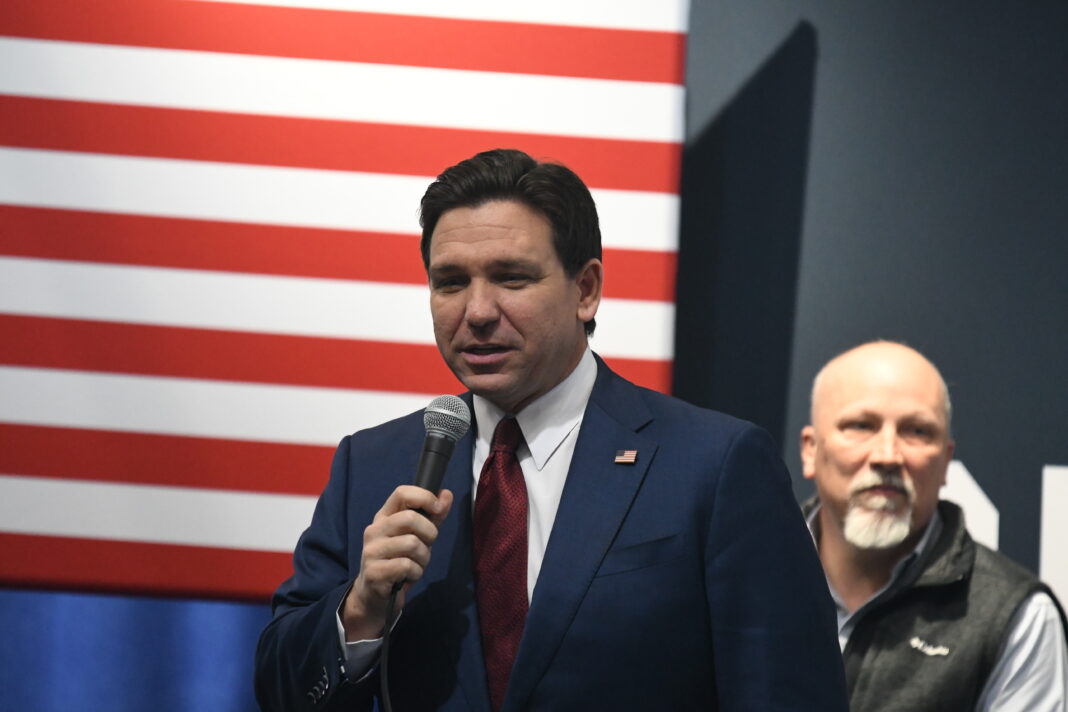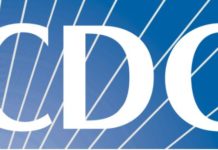Florida’s 22nd Statewide Grand Jury released its first interim report this week on how the COVID-19 pandemic response affected Floridians noting that preliminary findings show that masks, social distancing, and lockdowns were ineffective and “did not significantly change the overall risk” from the SARS-CoV-2 virus.
In December 2022, Governor Ron DeSantis’ requested the Florida Supreme Court commission a grand jury to investigate pharmaceutical manufacturers and other medical associations or organizations for crimes and wrongdoing committed against Floridians related to the COVID-19 shot.
According to the report, the members of the grand jury were not disclosed, but were described as being “apolitical” who were not public officials and had “no specific agenda with respect to” the COVID-19 shot. The panel members “were selected at random, based solely on [their] commitment to impartiality and on [their] willingness to devote significant amounts of our own personal time, month after month, to this process.” In addition, based solely on “chance” in the random selection process, the panel described itself as “racially and ethnically diverse, diverse in age, diverse in gender, diverse in politics and even diverse in lifestyle.”
The report stated, “Our main uniting feature is that each of us believes the citizens of the State of Florida deserve unbiased answers to the important questions raised by the Petition…Moreover, we concur that if violations of Florida criminal law occurred with respect to COVID-19 vaccines, they must be addressed by the appropriate authorities.”
The report also noted that the grand jury is “insulated” from the political influence of Gov. DeSantis and the Florida Supreme Court, and that the government’s involvement ended before the panel even convened.
“In a way, this Grand Jury has allowed us to do something that most Americans simply do not have the time, access, or wherewithal to do: Follow the science,” stated the report.
While the investigation is months away from being complete, the preliminary findings from the initial report include:
1. Masks
The report stated, “We have never had sound evidence of their effectiveness against SARS-CoV-2 transmission.” While the report acknowledged that wearing certain masks does help prevent a viral aerosol like COVID-19 from spreading, it stated that analysis is “incomplete” for two reasons. First, even if the right kind of mask was used with the right kind of fit consistently and filters were diligently changed, “it would still be virtually impossible for us to conduct our affairs with the rigidity necessary to receive the full measure of benefits the mask would provide…”
Secondly, the report noted that very small particles of 400 nanometers or smaller can hang in the air for hours. Since the COVID-19 virus itself is approximately 90 nanometers, studies say that surgical and cloth masks have limited utility against these small aerosol particles.
“People should have been told that masks, like any protective device, have limitations,” stated the report. “Public health agencies failed to adequately explain this important distinction to the American public in favor of a broad mask recommendation that did not make nearly enough distinction between the types of masks available and put at risk those it sought to help. Well-financed federal agencies chose to fill the discourse with flawed observational and laboratory studies, hiding behind their conclusion of
‘no equipoise’ to avoid the potential embarrassment of the public health advice they championed being invalidated by evidence”
2. Social Distancing
According to the report, by the fall of 2020 there was peer-reviewed, published scientific data available which stated the primary concern with aerosols is about whether someone is in an interior or exterior space and not the distance between people.
The report stated, “In enclosed interior spaces for extended periods of time, a distance of six feet or sixty feet is not going to make any difference.” The report noted that public policy should have focused on the data showing how certain filtration systems work effectively indoors to prevent aerosol clouds containing enough of an infectious viral load from accumulating, all while also taking advantage of outdoor spaces which help accomplish the same thing.
“Instead, many states and municipalities did the opposite, closing parks, taping up playgrounds and confining people to interior spaces—where viral transmission was more likely…,” the report noted.
The report also critiqued that “social distancing guidelines should have been much more a matter of public discourse” and updated early on to reflect the most current understanding of how the disease moves in indoor and outdoor spaces.
The report stated, “Institutional public health experts had this science at their disposal but continued to stick to advice that bore only a cursory resemblance to the contrary scientific evidence presented in the emerging data, That, coupled with heavy-handed directives from state and local actors, essentially turned scientific inquiry—the very basis of which is asking questions and doubting priors—into a form of civil disobedience. The world could have had a very different approach, where…the outdoors could have essentially been at their disposal.
3. Lockdowns
The government touted lockdowns as a way to “stop the spread” or at least “flatten the curve.” While the report noted some short-term benefits of lockdowns, such as a short period of reduced infections, there were also many long-term consequences.
The report noted that lockdowns were a “luxury of the laptop class” and those who could afford to stay home. “Essential workers” who were needed to keep essential services and supply lines running, as well as those among lower income families who could not afford to stay home showed a disparate infection rate much higher than other income classes. In addition, studies showed that city or state governments that held stricter lockdowns, stay-at-home orders, and school closures resulted with higher overall mortality rate over the long-term.
The report stated, “Effectively, lockdowns traded the immediate welfare of a smaller, affluent, well-represented group of older Americans who could afford to stay home for the longer-term welfare of a larger, less-affluent, poorly-represented group of children, teens, twenty-, thirty- and forty-somethings who could not. If anything, the result of this was a modest benefit to the former group at the expense of the latter.”
The report indicated it was more than just the virus itself that contributed to negative long-term effects. While organizations like the World Health Organization and the Centers for Disease Control and Prevention attribute the surge of mental health problems after 2020 due to the pandemic, the report cites studies show a rise in mental health issues in many people who did not contract the disease but were subject to lockdowns.
“Is this Grand Jury really supposed to believe…that all the mental health symptoms described therein are attributable to the virus, while none of them are attributable to the fact that heavy-handed, government-mandated lockdowns, stay-at-home orders and school closures turned people’s lives upside down for the better part of three years? That surmise not only offends common sense, it is also contradicted by CDC data from June of 2020 where a cross-section of Americans reported dramatically increased levels of anxiety, depression and PTSD at a time when—at the most—1 out of 20 of them had contracted the SARS CoV-2 virus, but when [lockdowns] across the nation had already been in place for months.”
The report stated, “A government mandated lockdown is like a credit card: It allows leaders to buy a period of depressed case growth, but that benefit is temporary and ends when the lockdown is lifted. The ‘interest’ of this benefit written in the language of excess mortality—is paid for in future months and years of economic hardship, mental and physical health consequences, and loss of educational attainment.”
“On average, however, when one includes all age groups, lockdowns were not a good trade,” the report concluded.
Liberty Counsel Founder and Chairman Mat Staver said, “This first report from the Grand Jury only confirms what we knew from the beginning of the COVID crisis. It is no surprise that the government’s response inflicted devasting collateral damage on Floridians and the nation. Common sense tells us that extended use of masks, lockdowns, social distancing, and school closures harm people and result in severe social distress. The government’s response to the crisis had nothing to do with science, rather it was about control. We must never allow this again.”

















